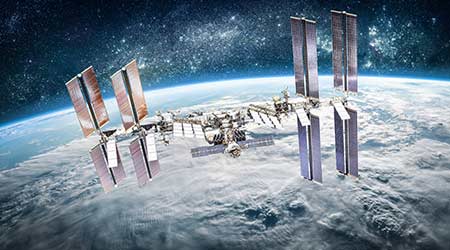
But, despite the lack of gravity, these bacteria, fungi, moulds, protozoa and viruses have adapted well to their surroundings. The scientists found that the ISS has developed a stable population of some 55 different types of microorganisms. “We expected to see differences in the genetic make-up or the composition of the microbial community, due to the adaptations they must have gone through,” says Moissl-Eichinger from the Medical University of Graz in Austria. By November this year, the ISS will have been occupied continuously for 20 years.Īnd as the world struggles with the Covid-19 coronavirus pandemic, it raises an interesting question – how do you keep a space station free of harmful bugs? (Read more about the l essons Spanish Flu can teach us about dealing with coronavirus.)Īfter the experience of Mir, biologists have been concerned about what else might be living on board and particularly any microbes that might endanger the station, or worse, the astronauts. “Spaceflight causes stress for crewmembers and we wondered if the microbes would be stressed as well and react in a bad way.” “Space is a very stressful environment, and not just for humans,” says Christine Moissl-Eichinger, who’s led a recent European Space Agency (Esa) study into the International Space Station’s (ISS) microbiome using samples collected by the astronauts and cosmonauts on board. The women who sewed the Apollo space suits.Everywhere we go, we take our microbiome with us and – just like humans – it’s learning to adapt to life in space. Most of these microbes are not only harmless but essential, enabling us to digest food and fend off disease. From the bacteria lining our gut, to the microscopic mites nibbling at our dead skin, it’s estimated that more than half the cells in our body aren’t human. We share our lives, and bodies, with microbes. All the unwanted life now living on the station had been carried into orbit by the multinational group of men and women who subsequently occupied the orbiting laboratory. When each Mir module launched from Earth it was near-pristine, assembled in clean rooms by engineers wearing masks and protective clothing. Even more concerning were the colonies of organisms attacking the rubberised seals around the space station windows and the acid-excreting bugs slowly eating the electrical cabling. Later analysis revealed the water was teeming with bacteria, fungi and mites.
Opening an inspection panel, they discovered several globules of murky water – each around the size of a football.



But when the crew began a study to assess the types of microbes they were sharing their living space with, even they were surprised at what they found. Power cuts were frequent, the computers unreliable and the climate control system was leaking. By 1998, after 12 years in orbit, Russian space station Mir was showing its age.


 0 kommentar(er)
0 kommentar(er)
